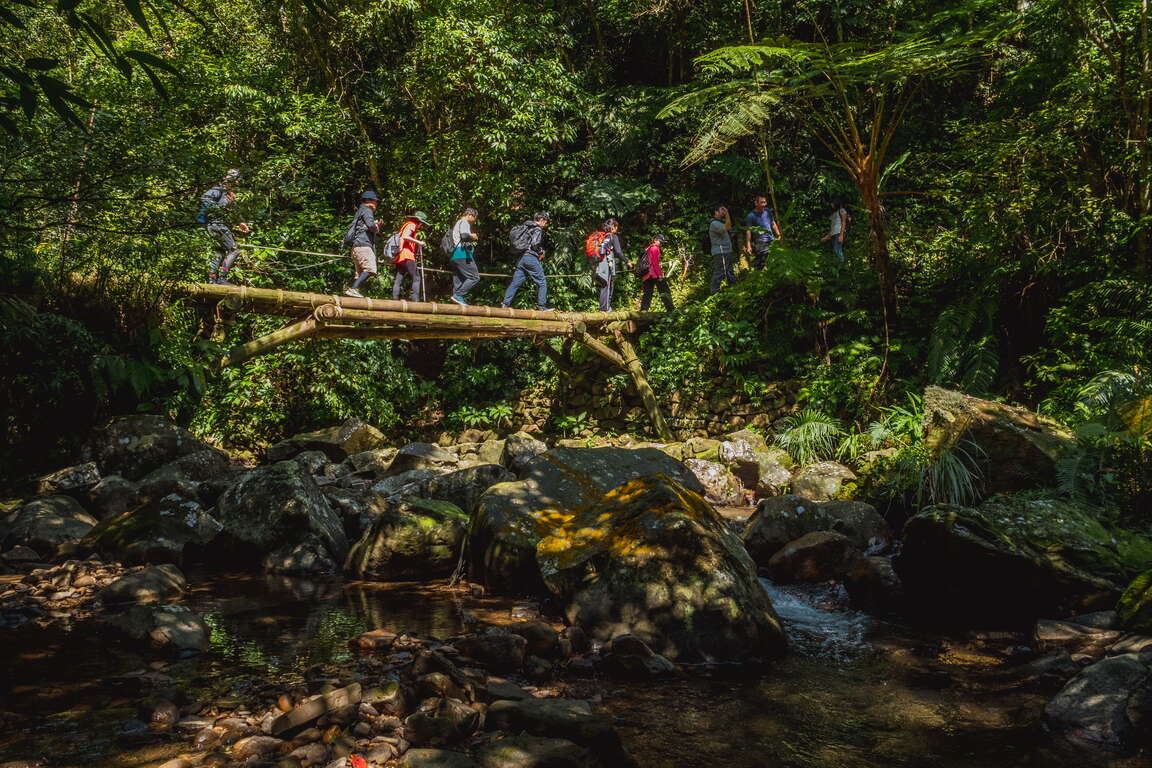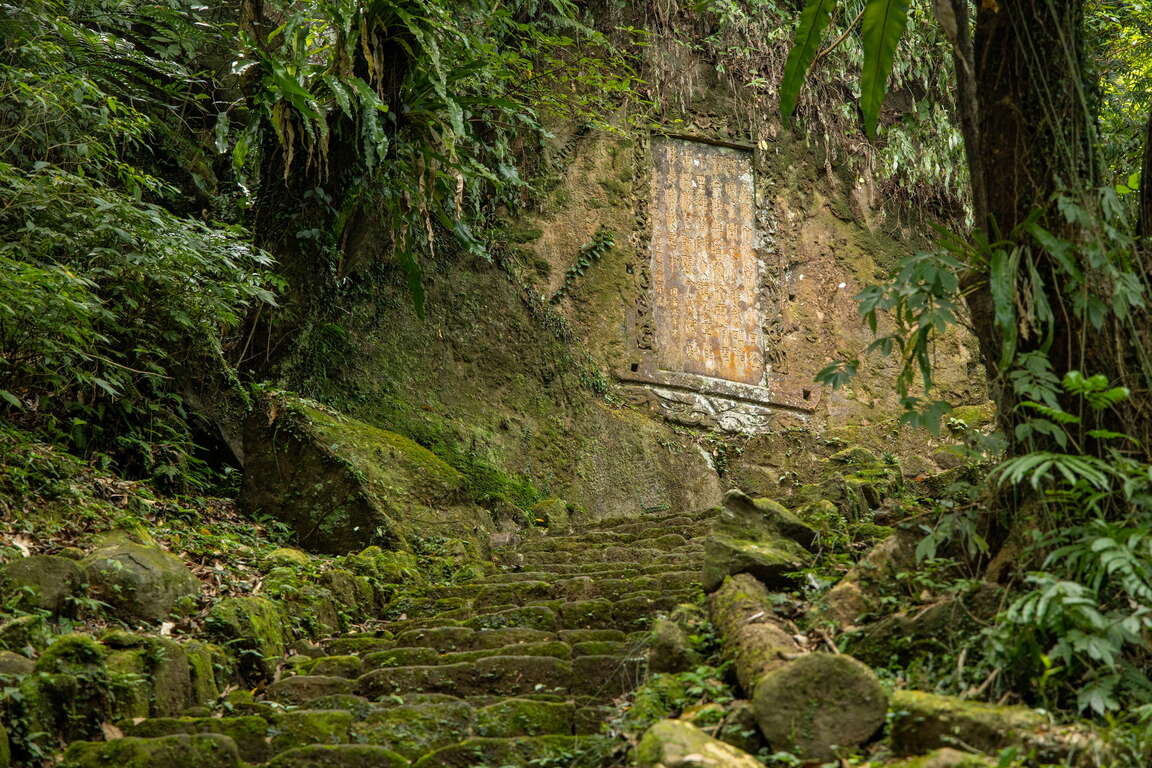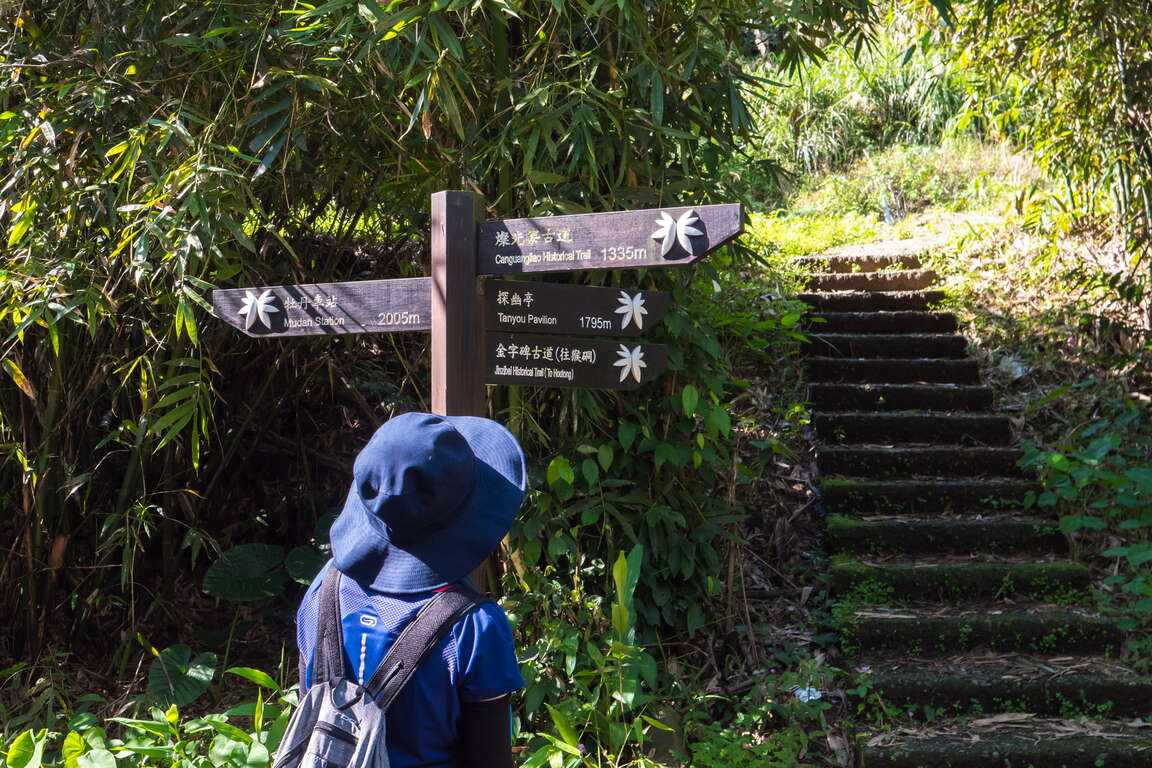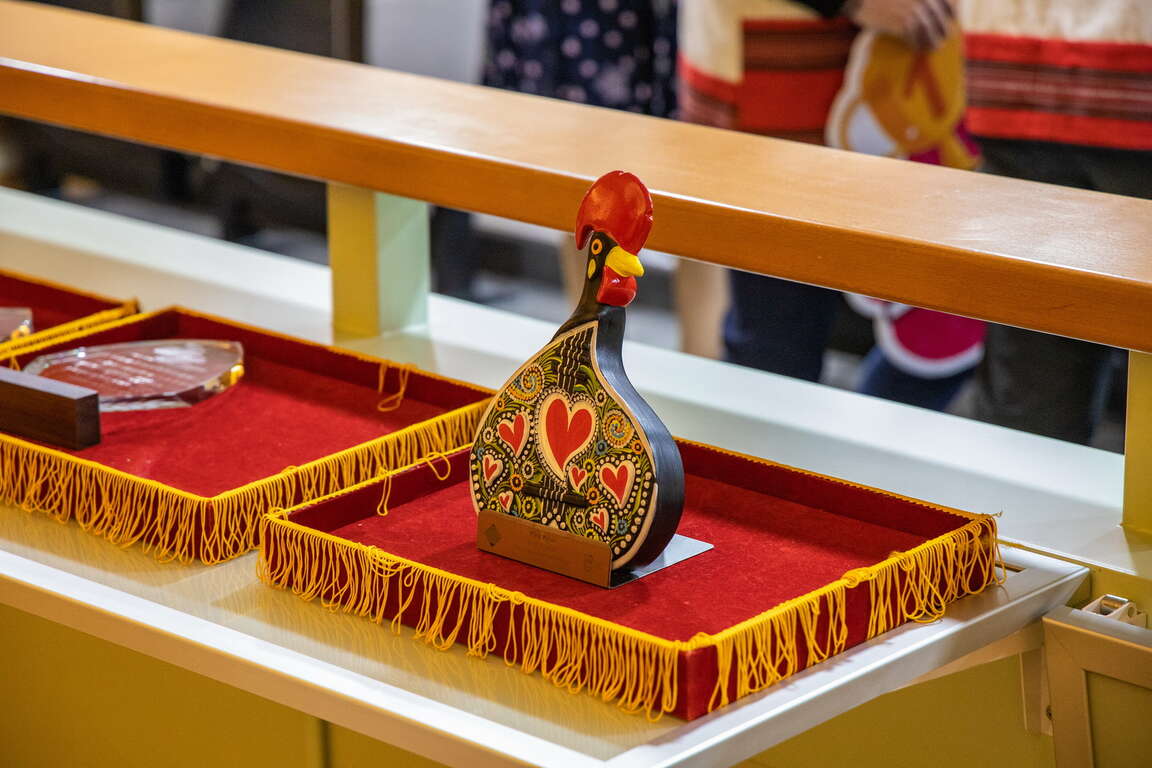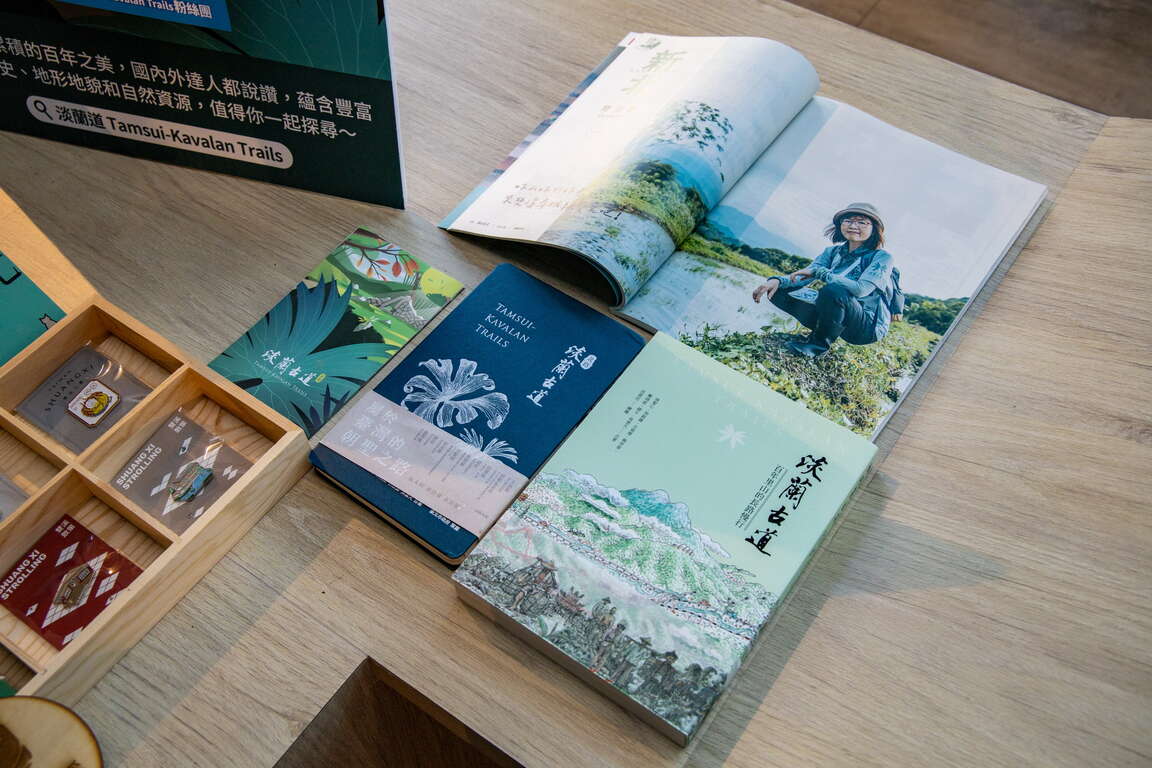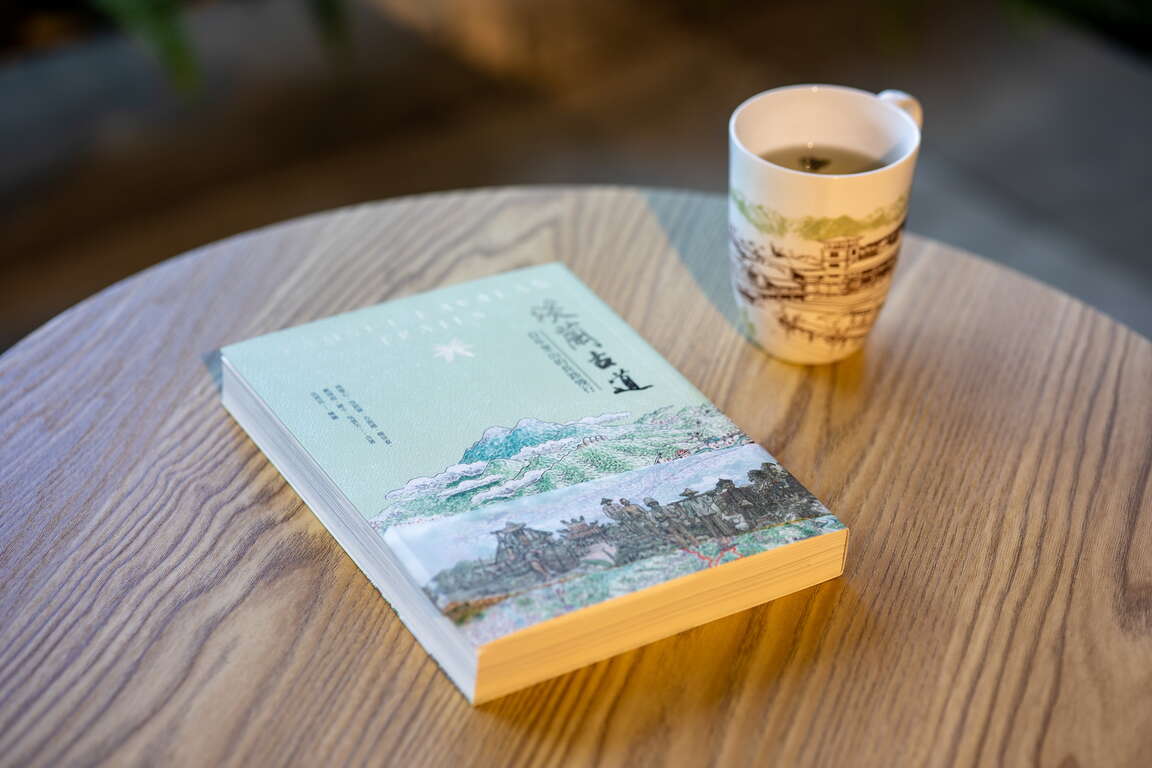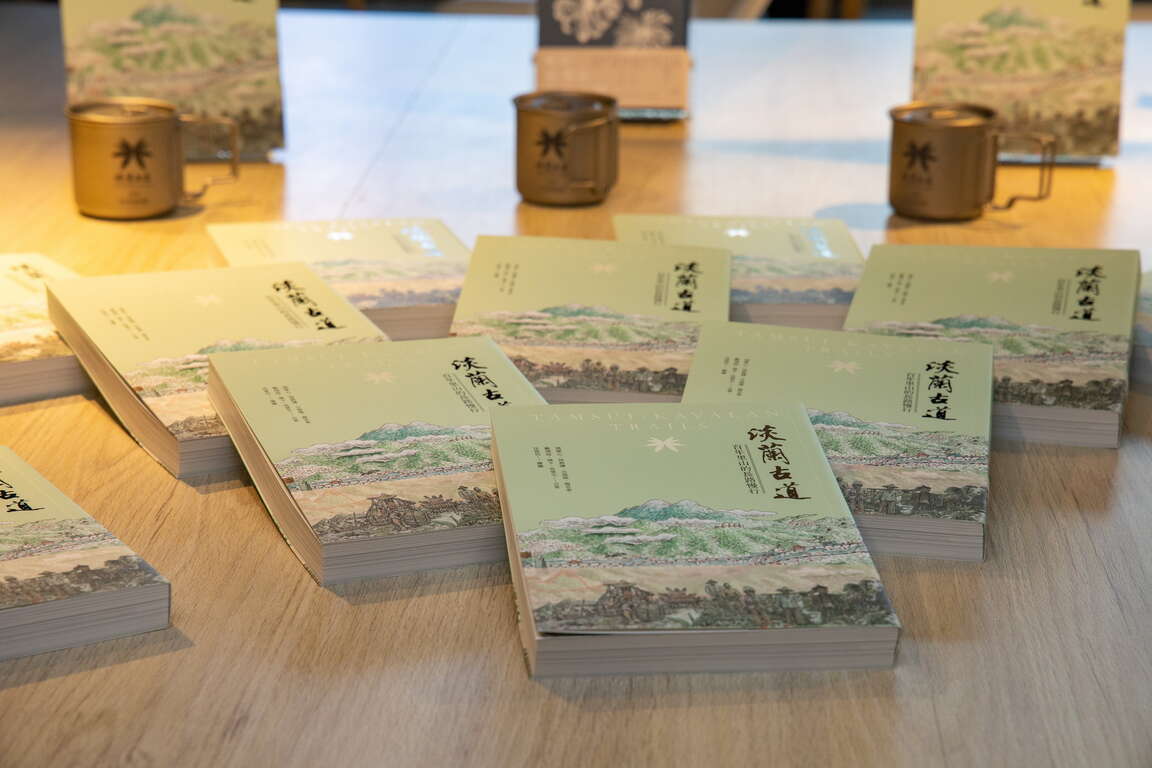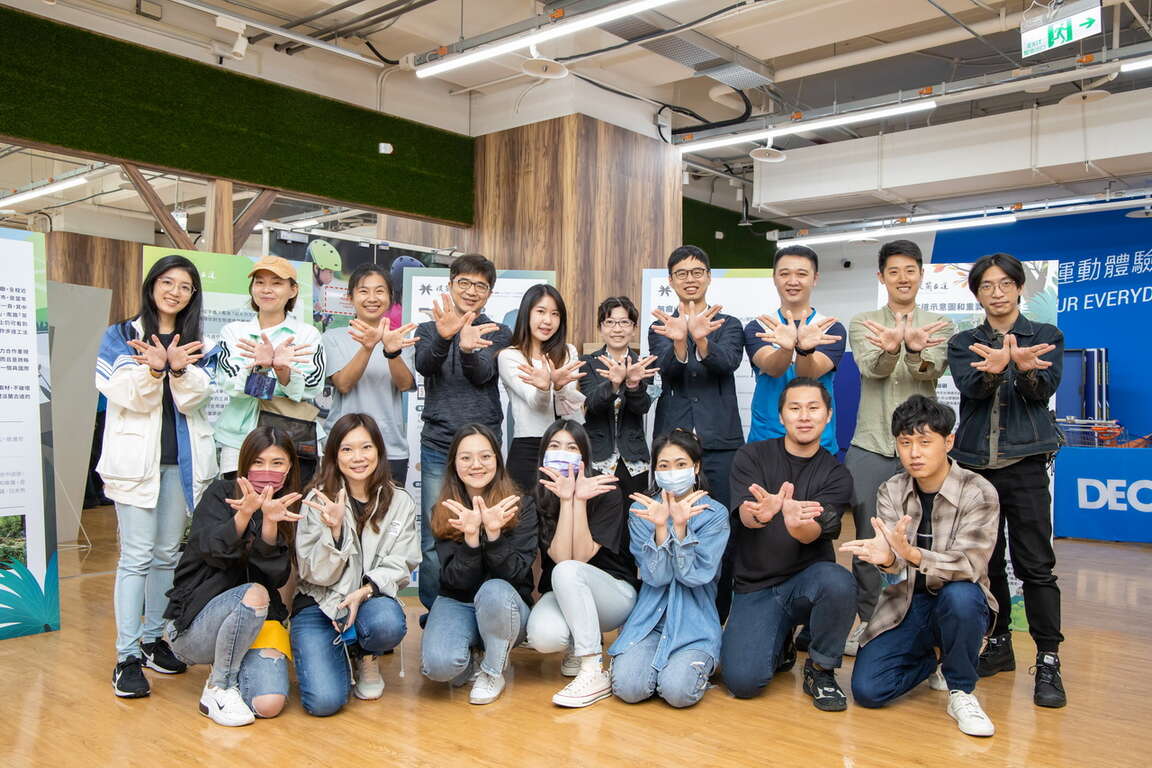Tamsui-Kavalan Trails: Hand-made trails, documentaries, and books
2015 and 2016 – “Reappearing the Centuries-Old Tamsui-Kavalan Trails”After the advent of railways and national freeways, the entire world underwent a significant transportation revolution. The Tamsui-Kavalan Trails, which had lost their original transportation function, gradually faded from public view. Nevertheless, for over a century, they have quietly existed within the mountainous region between Taipei and Yilan. Since 2015 and 2016, the Taiwan Thousand Miles Trail Association has collaborated with Taipei City, New Taipei City, Keelung, and Yilan across multiple counties and cities in the joint effort of the “Reappearing the Centuries-Old Tamsui-Kavalan Trails” project. By reviewing literature, maps, interviews, and other sources of information, the Taiwan Thousand Miles Trail Association has obtained the initial route background and, in conjunction with historical, cultural, landscape, recreational system, safety, and other considerations, designed the systematic Tamsui-Kavalan trail routes we have today. It has also adopted the twin-bristle fern as the identifying symbol, establishing the brand of the Tamsui-Kavalan Trails.
Combining public and private resources, the government and civilians collaborated to progressively restore these ancient trails using the handcrafted trail method. The concept of handcrafted trails relies not on heavy machinery and construction contractors, but employs simple tools and locally sourced materials instead. Through the participation of volunteers, a collective effort has been made to restore the trails, ensuring their harmonious integration into the existing landscape while preserving the essence of the original cultural pathways. After years of dedicated work, the centuries-old Tamsui-Kavalan Trails, with their rich and enduring history, have been rejuvenated.
2018 – “Tamsui-Kavalan Trails Trilogy”
To promote the ecology and culture of the Tamsui-Kavalan Trails, the Tourism and Travel Department of the New Taipei City Government collaborated with the internationally acclaimed Director Xiao Qing-yang. They traversed the northern, central, and southern sections of the Tamsui-Kavalan Trails, resulting in the creation of the "Tamsui-Kavalan Trails Trilogy". Director Xiao Qing-yang, through his work spanning from "The Tao of Kung Fu" and "The Tao of Ancestors" to "The Tao of Health" within these centuries-old trails, orchestrated live performances by traditional opera musicians and captured the sounds of nature, including insect chirping, bird calls, and the flowing river water. This endeavor beautifully illustrates the multifaceted vitality of these historical trails.
The “Tamsui-Kavalan Trails Trilogy” was honored with the first prize in the Sports and Leisure category at the 14th ART & TUR – International Tourism Film Festival in 2021. In 2023, the original soundtrack album “Beginningless Beginning” produced for “Tamsui-Kavalan Trails Trilogy” achieved a remarkable feat by winning the Best Recording Package award at the 65th Grammy Awards, propelling Tamsui-Kavalan Trails onto the international stage
2019 – “Tamsui-Kavalan Trails – The Northern Section”
The first travel guidebook for the Tamsui-Kavalan Trails, titled "Tamsui-Kavalan Trails – The Northern Section", was brought to life through the combined efforts of the Taiwan Thousand Miles Trail Association, historians, and mountaineering experts who possess an intimate knowledge of these trails. After meticulous planning and 18 months of dedicated compilation, the guidebook was officially launched. The book provides insights into the cultural history, town stories, flora and fauna ecology, along with recommended routes along the northern section. Its high-quality layout garnered immediate acclaim upon release, and to date, it has undergone five printings. Many travelers set out on the northern section of the Tamsui-Kavalan Trails with this book in hand to experience these historic trails step by step, and craft their own unique stories along the way.
2020 – The website themed on the Tamsui-Kavalan Trails
A website themed on the Tamsui-Kavalan Trails was developed relying on the smart technology. This innovative UI/UX interactive trail map simplifies the intricate network of trails within the Tamsui-Kavalan Trails. From users' perspective, this website integrates and interfaces information related to pre-trip preparations, itinerary planning, GPX data, transportation, weather, and rest stops. Easily capture all types of hiking information, and comprehensively explore the abundant history, culture, humanities and ecology of the Tamsui-Kavalan Trails.
2022 – “Tamsui-Kavalan Trails – The Long and Slow Journey through Centuries-Old Satoyama”
Following the publication of the acclaimed "Tamsui-Kavalan Trails – The Northern Section", the Tourism and Travel Department of the New Taipei City Government once again collaborated with several experts of the Tamsui-Kavalan Trails to introduce the book "Tamsui-Kavalan Trails – The Long and Slow Journey through Centuries-Old Satoyama". This book portrays the travel experiences along the northern, central, and southern sections of the Tamsui-Kavalan Trails, along with visits to the stories of 22 local artisans and businesses within the Tamsui-Kavalan Trails. It includes a practical hiking guide for the entire route and exquisite photographs. The book also features an exquisite fold-out map, hand-painted by an artist who has received the Golden Tripod Award after personally walked through all sections of the Tamsui-Kavalan Trails. It also includes the stories behind the planning and branding of the Tamsui-Kavalan Trails, with the hope of embarking on the next century together.
The Tourism and Travel Department of the New Taipei City Government has successfully promoted the Tamsui-Kavalan Trails for many years. Today, these trails are internationally and domestically renowned long-distance trail. In addition to marketing and promotion through the internet, videos, and books, the Department has also collaborated with numerous non-governmental organizations to organize activities such as handcrafted trail workshops, mountaineering seminars, and National Greenway guide training. Let this centuries-old historical trail continue to thrive through people's interactions and visits.
